Mastering can feel confusing, especially when you’re doing it on your own. There is a lot to take care of: tonal balance, stereo shaping, dynamic range, and more. Therefore, to resolve this issue, we can utilize reference tracks as a guide. It gives you a clear target for how your song should sound.
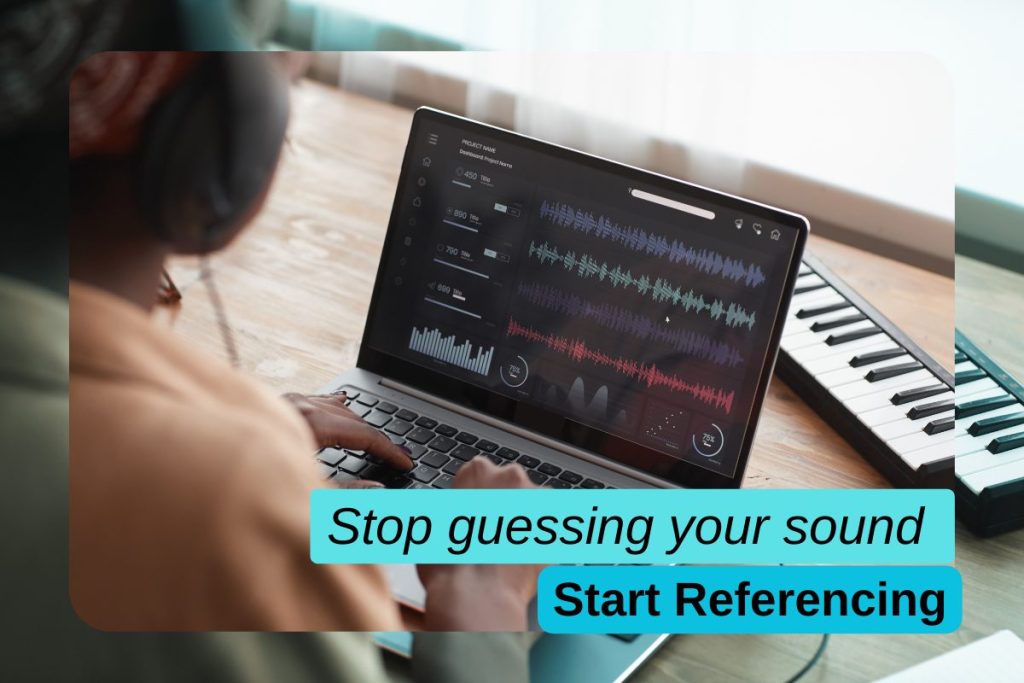
Whether you’re a beginner or just looking to improve your mastering results, using a reference track can make a big difference. In this blog, we will explore how reference tracks can benefit your mastering sessions.
Table of Contents:
Advantages of Reference Tracks in Mastering
How to Choose a Reference Track?
Where to download a reference track from?
How to Master Using the Reference Track?
Audio Plugins That Help with Reference Mastering
Other EASY way to master using a reference track
What are reference tracks?
The term “reference” means something you look at or listen to for guidance. In music, a reference is a song that helps you check if your own track sounds right.
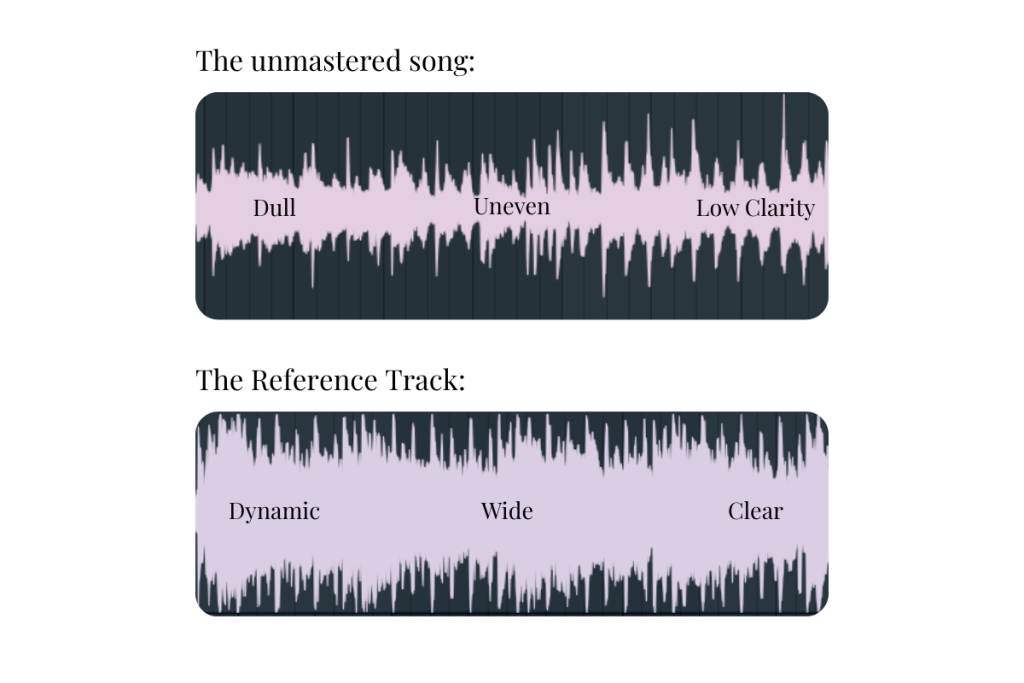
So, a reference track gives you direction during the mastering process, so you don’t work blindly. It helps you build a more focused mastering chain. The main idea is to use sound comparison to measure your mix against a well-mastered track.
You’re not trying to copy it exactly. Instead, you’re using it to check things like:
- Is your bass too loud or too soft?
- Do your vocals sound as clear?
- Is your overall sound as polished?
By comparing your track to a reference, you can spot what’s missing or what needs adjusting. It helps you make better choices and improve the final sound of your song.
Advantages of Reference Tracks in Mastering
Here are some of the benefits:
1. Helps You Stay on Target
A reference track provides a clear sound goal, allowing you to mix and master with confidence.
2. Improves Consistency
It helps your song match the loudness, tone, and balance of other songs in the same genre.
3. Reveals Problem Areas
You can easily hear if your track has too much bass, harsh highs, or muddy vocals when compared to the reference. Through regular sound comparison, you’ll start to hear details that are easy to miss otherwise. This significantly helps with reference mastering.
4. Better Translation Across Devices
Reference tracks are tested on many systems. Matching their sound helps your song play well on speakers, headphones, and phones.
5. Saves Time
Instead of guessing what sounds “right,” you can quickly adjust your master to get closer to the polished and study-ready final sound.
How to Choose a Reference Track?
Using a reference is one of the best ways to improve your mastering process at home and understand how to effectively shape your mastering chain. However, selecting the right reference track is crucial. It should match the kind of sound you want for your own song. Here are some easy tips to help you choose:
1. Same Genre
Choose a song that’s in the same genre as your track. A hip-hop song won’t help much if you’re mastering an indie song.
2. Similar Mood or Energy
Try to match the vibe. If your song is calm and not so upbeat, don’t use a loud party anthem as a reference.
3. Well-Known or Trusted Sources
Use songs from artists or producers you trust. Commercial releases, Spotify charts, or even songs you love can be great references.
4. Good Dynamics
Avoid overly compressed tracks. It can mess up the liveliness of your final sound. A good reference should have a nice balance of loudness and dynamics.
Where to download a reference track from?
The best way to obtain a reference track is to purchase it from a digital store like iTunes or Amazon Music, where you can download high-quality audio files (typically WAV or high-bitrate MP3). These versions keep the full detail of the original master and are ideal for referencing.
Another good option is Bandcamp, where many artists and labels offer lossless formats like FLAC or WAV. Avoid using songs from streaming services like YouTube or Spotify for mastering purposes, as their audio is compressed and does not accurately reflect the full sound quality. Whenever possible, use WAV or AIFF files for the most accurate reference.
How to Master Using the Reference Track?
Once you’ve selected a suitable reference track, the goal is to compare it with your own song and make adjustments so that your track sounds of comparable quality. You’re not trying to copy it exactly, but rather use it as a guide.
Start by importing the reference track into your DAW (Digital Audio Workstation). Place it on a separate track so you can easily switch between your mix and the reference. Make sure both tracks play at the same volume level. If the reference is louder, turn it down slightly so your ears aren’t tricked into thinking louder is always better.
Now listen carefully. Play a short section of the reference track, then switch to your track. Pay attention to a few key things:
- Loudness: Does your track sound as full and loud as the reference? If not, you may need to increase the overall volume using a limiter, but don’t overdo it.
- Tone: Does your song sound too bright, dull, boomy, or thin compared to the reference? Use an EQ to adjust the balance of bass, mids, and highs.
- Clarity: Are the vocals and instruments as clear? If your mix sounds muddy, you may need to refine some low or overlapping frequencies.
- Stereo Width: Does your track feel as wide or open as the reference? Tools like stereo imaging can help, but only in small amounts.
- Dynamics: Is your track overly squashed or too soft? A little compression can help smooth things out, but don’t flatten the sound completely.
Use short sections (10–20 seconds) and compare often. It’s best to take breaks so your ears don’t get tired. The Mastering process is all about small, careful changes.
Over time, using a reference track trains your ears and sharpens your decisions throughout the mastering process, helping you shape a more effective mastering chain. This type of reference mastering works through repeated sound comparison, guiding you toward a more balanced and professional final sound.
Audio Plugins That Help with Reference Mastering
1. Mastering The Mix – Reference 2
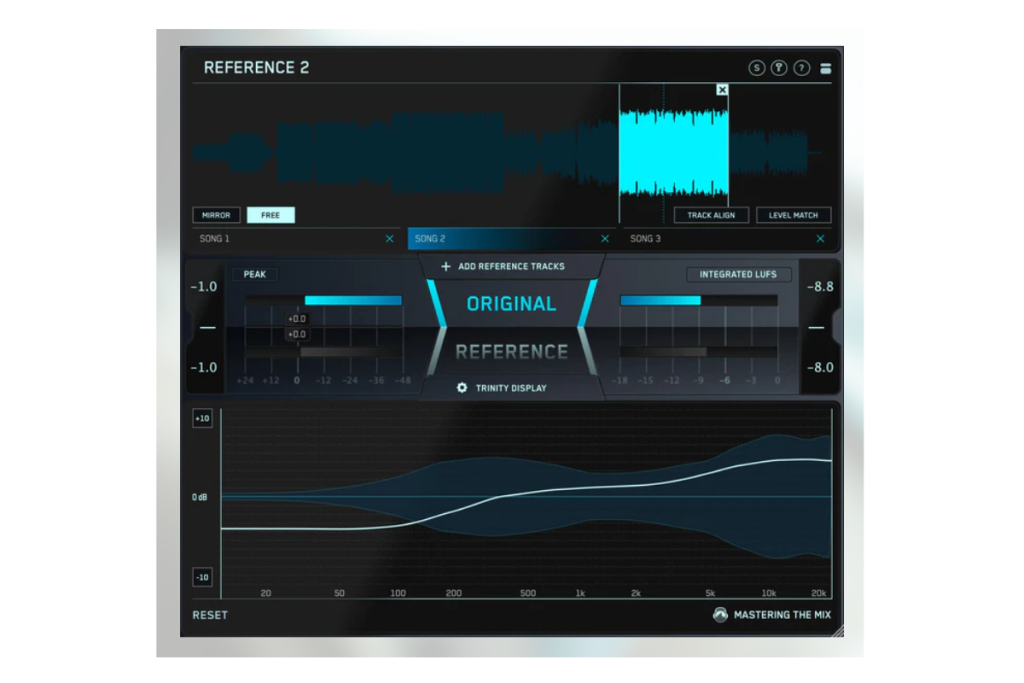
One of the easiest and most popular tools for comparing your track with multiple reference tracks. It matches loudness levels automatically and lets you loop and switch instantly between different sections. Read More.
2. ADPTR Audio – Metric AB
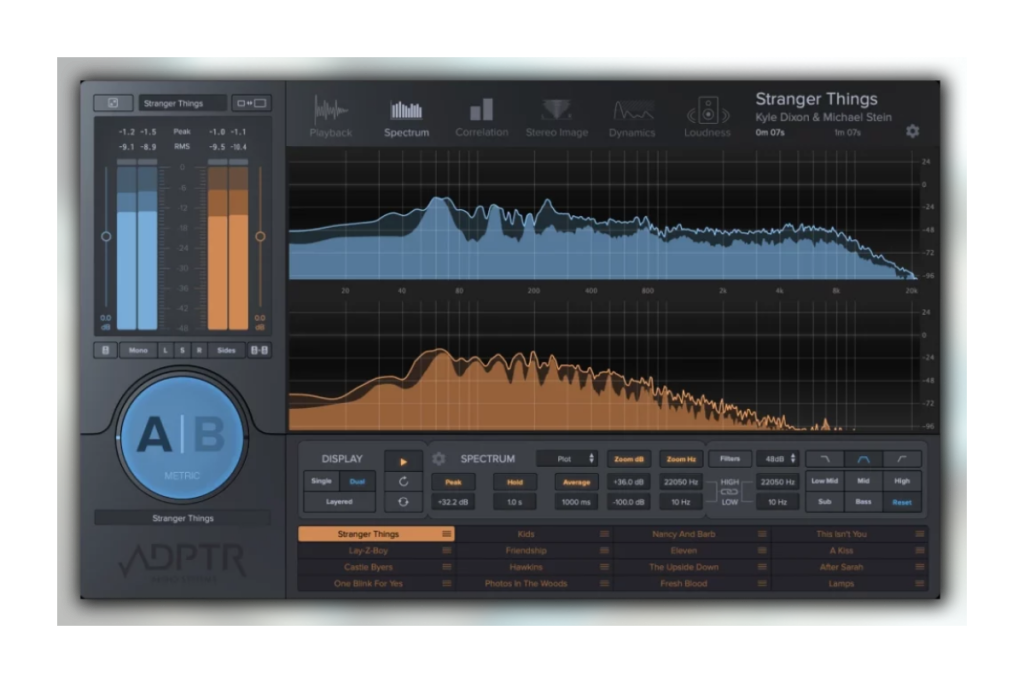
A powerful plugin for detailed A/B referencing. It shows loudness, stereo image, dynamics, and frequency balance side by side with your reference track. Great for learning and precision work. Read more.
3. iZotope Ozone 11
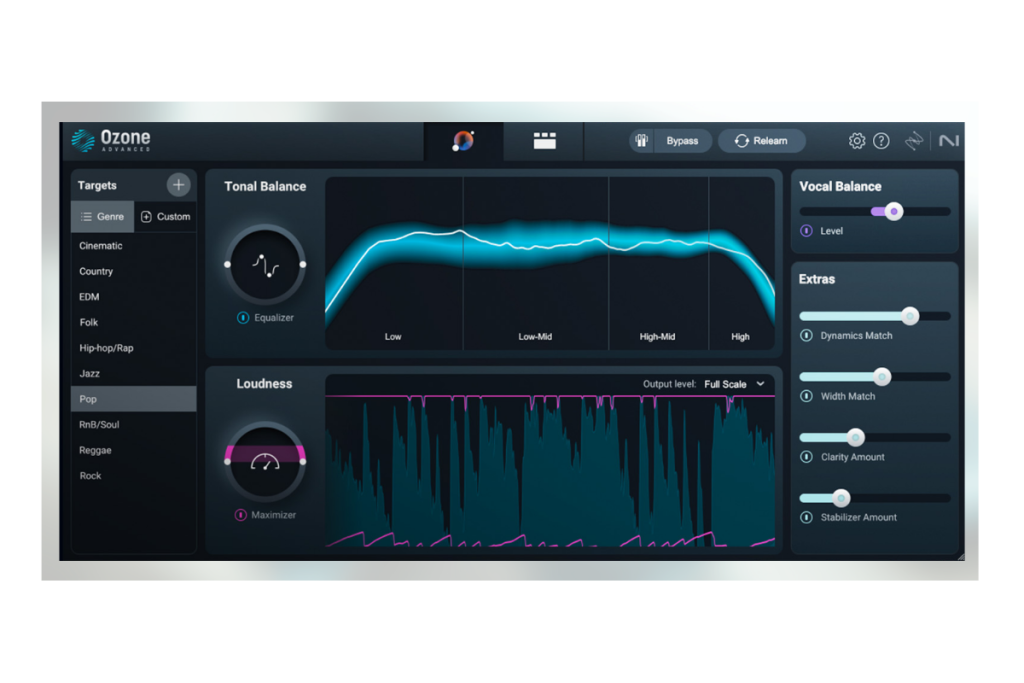
Includes tools like Match EQ and Mastering Assistant. You can load a reference track, and Ozone will automatically help match the tone and loudness. Read more.
4. FabFilter Pro-Q 3
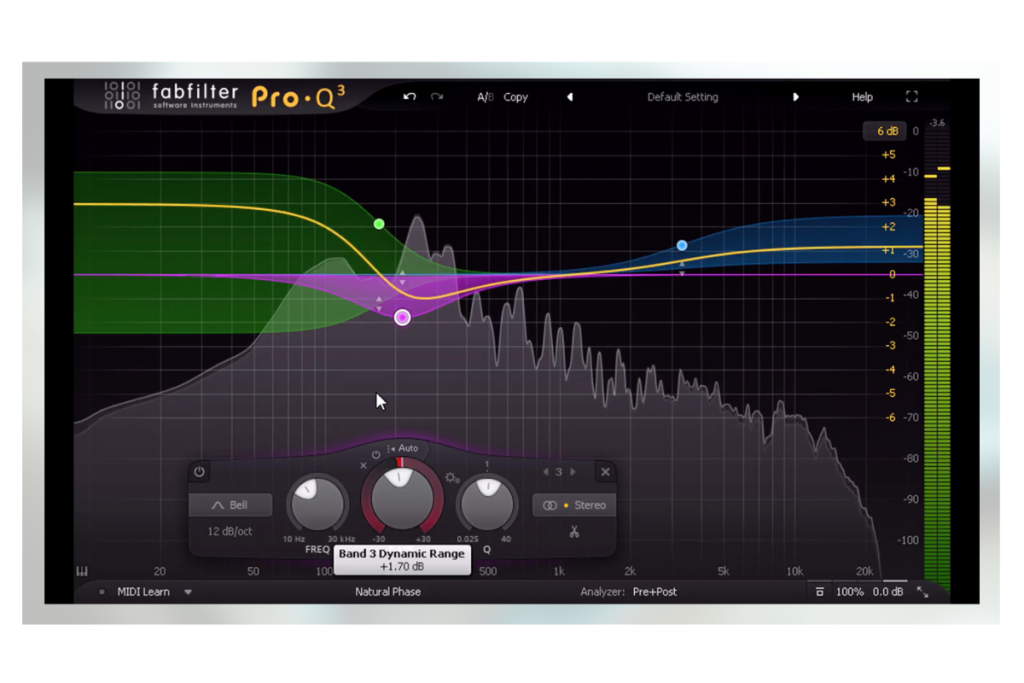
If you want to shape your EQ to match a reference manually, Pro-Q 3 features a spectrum grab function that helps you visually match the tonal curve of your reference track. Read more.
Other EASY way to master using a reference track
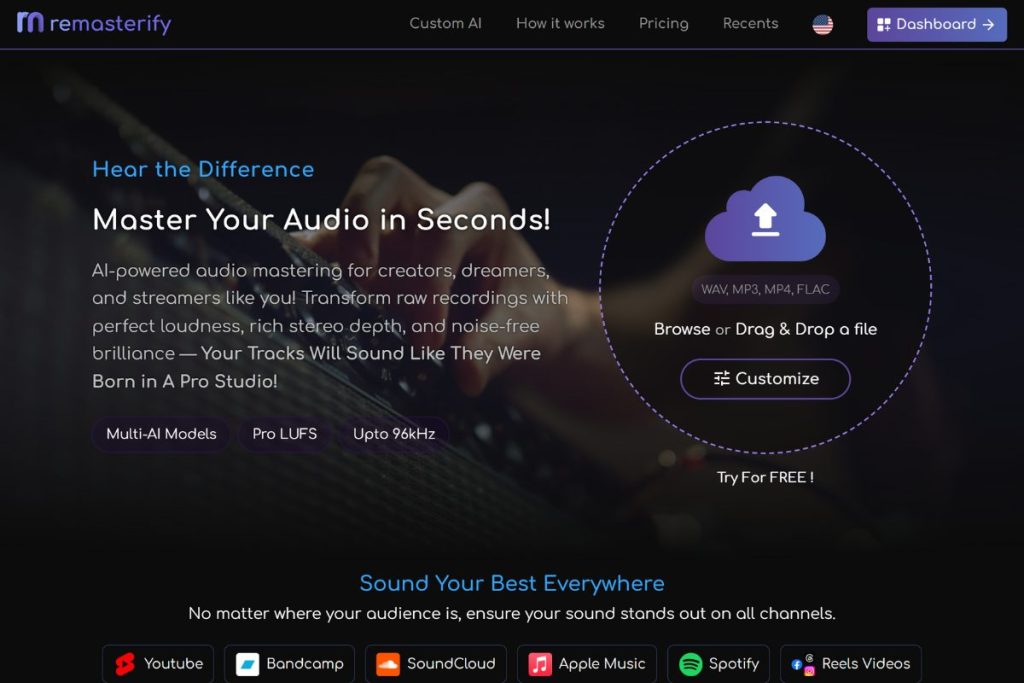
If you want to skip the tedious process, you can visit Remasterify.com. It’s simple and only takes a few minutes to get started. You can upload the song you want your track to sound like. Within seconds, Remasterify analyzes the properties of the reference track and begins the mastering process. It ensures your song matches the reference in terms of dynamic range, tonality, and other key sound qualities. This makes reference mastering fast and simple.
FAQ
What exactly is a reference track?
A reference track is a professionally mastered song that serves as a sound guide for mixing or mastering your own music.
What does a reference track mean?
It refers to a track you use for sound comparison, allowing you to match aspects such as tone, loudness, and overall sound quality.
How to use a reference track?
Import the reference into your project, adjust its volume to match your mix, and compare it frequently to fine-tune the loudness, EQ, and clarity of your own track.
Do professionals use reference tracks?
Yes, many professionals utilize reference tracks to stay on target and ensure their mix or master sounds polished and balanced.
Conclusion
Mastering is the final step where your song gets its polish and balance. Using a reference track can guide your ears and help you make smarter decisions during this stage. It provides a clear picture of what a well-finished track should sound like and prevents you from second-guessing your choices.
Over time, regularly working with reference tracks will also improve your critical listening skills. You’ll start to notice small details that make a big difference in the final sound. Whether you’re just starting out or becoming more serious about your music, learning to use a reference track is a simple yet powerful habit that can elevate your work to the next level.
